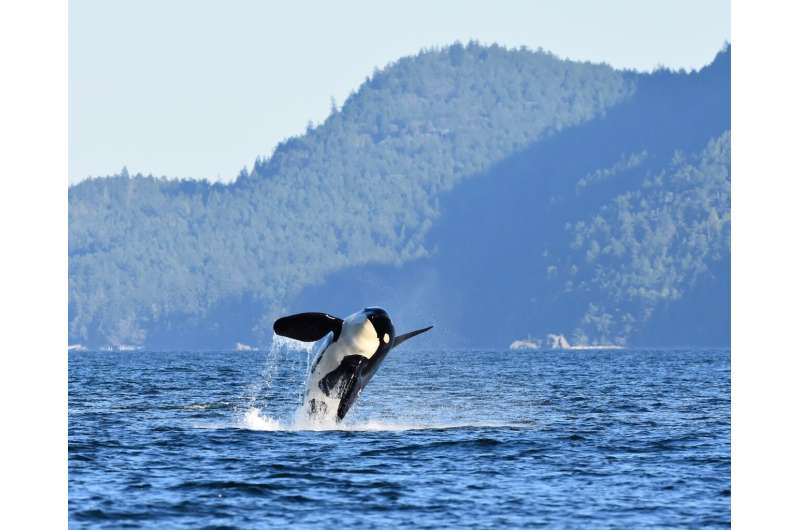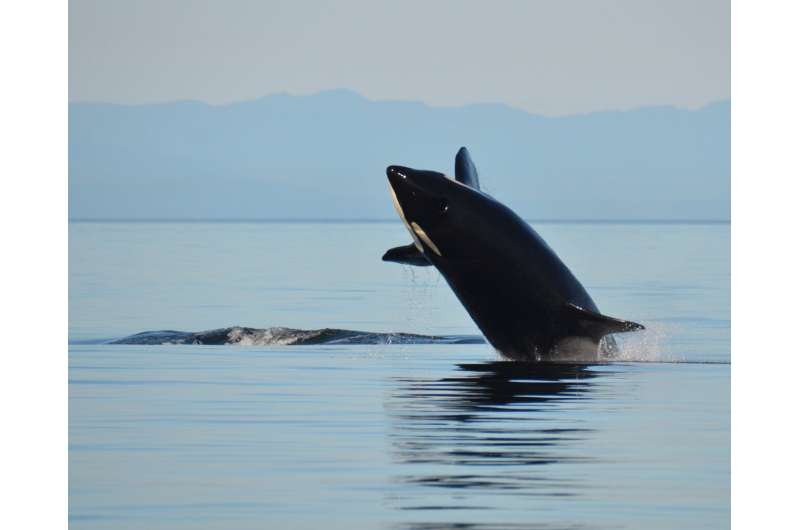This article has been reviewed according to Science X's editorial process and policies. Editors have highlighted the following attributes while ensuring the content's credibility:
fact-checked
peer-reviewed publication
trusted source
proofread
2018–2022 Southern Resident killer whale presence in the Salish Sea: continued shifts in habitat usage

Monika Wieland Shields, Director of the Orca Behavior Institute, has observed orcas in the Salish Sea, a marginal sea of the Pacific Ocean located in the Canadian province of British Columbia and the U.S. state of Washington, since 2000. She has recently published an article in the peer-reviewed open access journal PeerJ that provides crucial insights into the changing habitat usage of the critically endangered southern resident killer whales (Orcinus orca), shedding light on historic trends and the current status of the population in the Salish Sea. We caught up with Monika to find out more about her research and the orcas she is so passionate about.
Can you tell us a bit about yourself?
My name is Monika Wieland Shields and I'm the co-founder and director of the non-profit Orca Behavior Institute (OBI) based on San Juan Island, Washington, U.S.. We conduct non-invasive behavioral and acoustic research on two populations of killer whales that frequent the regional inland waters known as the Salish Sea: the endangered fish-eating southern resident killer whales and the thriving mammal-eating Bigg's killer whales. I have been studying, photographing, writing about, and advocating for these whales for over 20 years, and am the author of the 2019 book "Endangered Orcas: The Story of the southern residents".
Can you briefly explain the research you published in PeerJ?
One of my long-term projects at OBI is tracking the shifting habitat usage of southern resident killer whales. Their seasonal usage of the Salish Sea has changed dramatically since their endangered listing in 2005, correlating with shifts in their preferred prey. This study provides an update on daily whale occurrence from 2018-2022 showing that these shifts are continuing to occur.

What did you discover and where?
The focus of this study is the inland waters of Washington State and British Columbia, a region known as the Salish Sea. This study shows that historic southern resident habitat use of this area has essentially reversed: they used to be most abundant here from May through September, but now occur more in the fall and winter months while their spring and summer presence has declined dramatically.

What was significant about your findings?
Protecting habitats is a key component of endangered species recovery, but to be biologically meaningful, any geographic or temporal protection zones need to overlap in space and time with how the target species is currently using the habitat, rather than based on historic trends. Both Canada and the US have implemented regional and seasonal protection measures aimed at supporting population recovery, but it is important that they are regularly updated to reflect shifting habitat usage by the southern residents. This study fills that data gap by demonstrating how these endangered orcas are utilizing the Salish Sea over the last five years and how that has shifted from previous trends.
More information: Monika W. Shields, 2018–2022 Southern Resident killer whale presence in the Salish Sea: continued shifts in habitat usage, PeerJ (2023). DOI: 10.7717/peerj.15635
Journal information: PeerJ
Provided by PeerJ



















